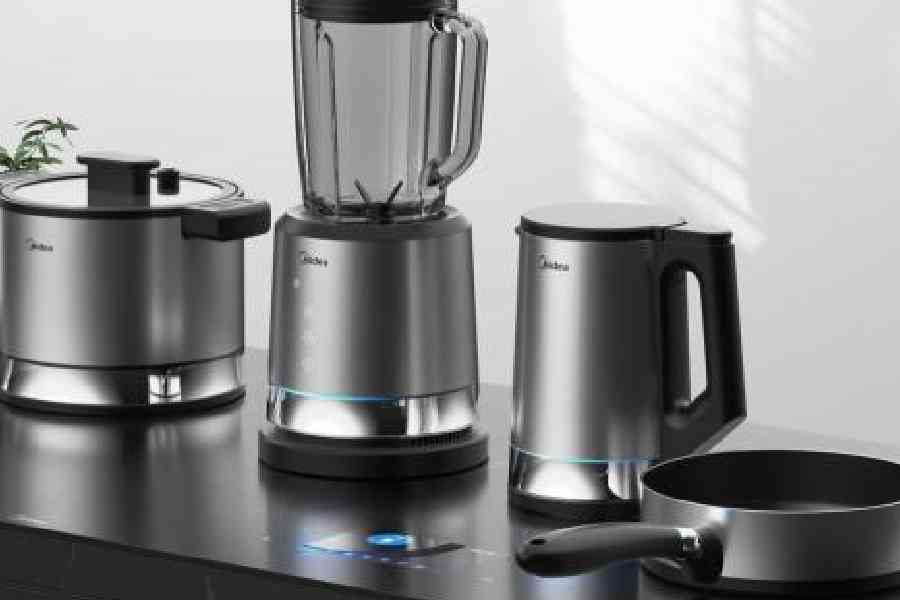The electric kettle roars away but there’s no power cable in sight. The juicer delivers a jug of pulpy orange goodness but the electric cord cannot be seen. It may appear like a scene from the 1960s cartoon series The Jetsons but a new kitchen solution is (almost) here.
A technology similar to the one that many are already using to power smartphones is coming to the kitchen. Not tomorrow but certainly in the near future as appliance makers sign up for Ki, a global wireless power transfer standard for kitchens. The Wireless Power Consortium (WPC) has been demonstrating the versatility of the Ki standard, which can bring to life high-powered devices like coffee makers, air fryers and toasters without worrying about cords.
When it comes to Qi charging of smartphones, there is a trickle of wireless power to charge the battery. Kitchen appliances need significantly more energy. Qi and Qi2 standards can deliver up to five and 15W of power, respectively, while the Ki standard, through the use of larger coils, can send up to 2,200W (2.2 kW) of power.
Ki relies on electromagnetic induction for the wireless transfer of power to appliances. The transmitters will initially be combined with conventional induction cooktops and later have the option of being mounted under countertops or kitchen islands. One of the challenges the new standard had to tackle involved transmitting power through materials like granite, marble and wood up to 1.5 inches thick.
“The benefits of the Ki standard will get people to reimagine how kitchens are designed and used. Whether it is new homes being built, existing homeowners remodelling their kitchens or simply the growing number of people eager to enjoy the benefits of a smart home,Ki enables a new generation of smart cookware thatwill make cooking more convenient, safer and more space efficient,” said Paul Struhsaker, executive director of WPC.

Safety first
The Ki cordless kitchen standard stops power from being transferred when keys, metal knives, phones or other objects are placed on a transmitter spot. The cordless kitchen appliances communicate with the transmitter using near-field communication (NFC) to ensure that the amount of power received remains within the limits of the appliance and according to input from the user. As soon as an appliance is placed on the transmitter, communication begins. Devices switch off immediately after being removed from the pad. If a blender, for example, is knocked over, the power delivery is automatically cut off.
According to WPC, Ki cordless kitchen appliances are required to “operate at efficiencies greater than 90 per cent of equivalent appliances that use power cords”, so the “difference in usable power is negligible and is unlikely to be noticed in daily usage”. Since Ki-supported devices don’t have a power cord, storage space can be better utilised, offering an uncluttered look.
The flip side
A cord-free kitchen requires new hardware. How many of us are willing to sacrifice a perfectly good set of appliances for a clutter-free kitchen? Replacing functioning appliances needlessly can translate into environmental concerns too.Then there is the issue of aligning cookware perfectly with the coils in the countertop. Otherwise, the connection won’t work at all or it will be less efficient. You may miss the ease of pulling out a stand mixer and putting it anywhere on the countertop before plugging it in.
WPC members who have participated in the development of the Ki standard include Philips, Midea, Beko, Miele and E.G.O. Among the first companies to bring the technology to consumers is Midea. Its Celestial Flex Series includes a blender, steamer and kettle but the company has not announced a sale date and price points.
It’s no secret that messy food is where the satisfaction is: a few hours of slow-simmering mutton or preparing shukto… now that can get messy. Can Ki handle the pressure?
It’s too early to gut the kitchen but given the pace at which Qi charging gathered steam among smartphone users, the next few years will offer appliance makers a new marketing technique to make us upgrade.










